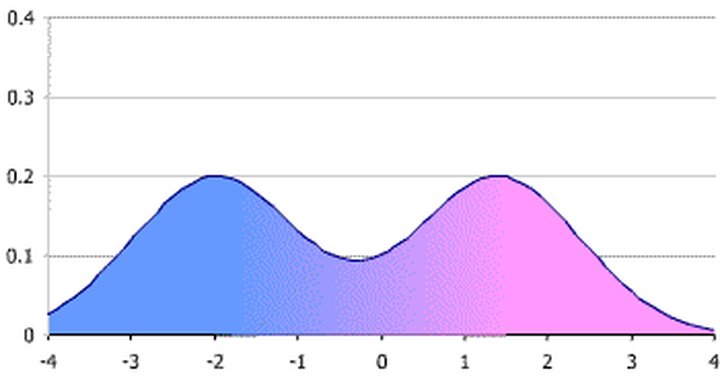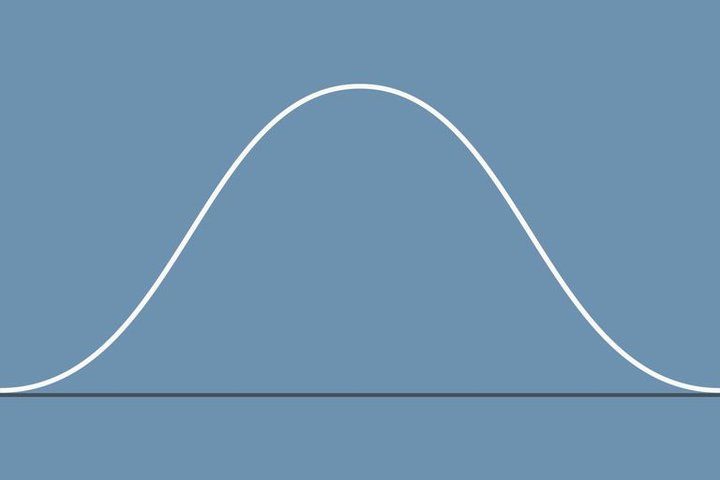“The [Myers-Briggs Type Indicator], like the Rorschach or palm reading, floats above criticism, parody, and evidence.”
—Carol Tavris
I have a problem with racial and national stereotypes. You know how it works: too-polite Canadians, dumb Polacks, pot-addled Jamaican rastas, boozy Aussies, weather-obsessed, snotty Brits. Ditto gender stereotypes, where women are usually portrayed as lesser beings than men — except they’re more intuitive? And all the rest: ditzy blondes, nagging Jewish mothers, fanatical Muslims…
When I was a kid growing up in the UK, I heard such stereotypes tossed around without thought for accuracy or kindness. Happily, the world has changed in the last 70 years and slurs like these are much less common now. Yet stereotypes persist in the form of, for instance, astrology, where you’re labeled by where the sun was in the sky at birth—or would have been, had you been born in Babylonian times. (Sun signs are one off these days — the sun was in Leo when I was born on September 6, dammit.)
Which brings me to Myers-Briggs, the most insidious of current stereotyping systems, used every year by two million people in 26 countries worldwide; 200 federal agencies, and dozens of Fortune 500 companies. It’s used to assess potential employees, marriage partners, soldiers. And it has exactly zero scientific basis.
In case you’ve been mercifully spared from encountering it, the Myers-Briggs Type Indicator®, or MBTI, consists of answering 93 yes/no questions to determine your innate, unchangeable disposition. (Sample question: “When making a decision, do you rely more on your feelings than on analysis of the situation.”) Having given yes/no answers to the questions, you’re then stereotyped—sorry, categorized—into one of 16 personality types, derived from combining four bimodal styles:
- E/I (extravert/introvert)
- S/N (sensing/intuition)
- T/F (thinking/feeling)
- J/P (judging/perceiving)
Thus, you could discover that you’re an introverted, sensing, thinking, judging sort of person, an ISTJ in the jargon. Congratulations! You got the job! Or Oh, sorry, we were really looking for an ENFP, too bad, you were perfectly qualified otherwise.
This pseudoscientific bullshit was developed in the 1940s by mom and daughter Katharine Cook Briggs (1875–1968) and Isabel Briggs Myers (1897-1980), neither of whom was trained in psychology, statistics or anything else relevant. To give the pair credit, they didn’t create the MBTI to make money; they believed they’d found a way—based loosely on the work of psychologist Carl Jung—to help make people happier and more efficient, especially at work. The whole lucrative scam came later.
Despite
its near-universal acceptance, the MBTI doesn’t stand up to
analysis. For instance, people taking it again five weeks after their
first test frequently—around 50%—discover that they’ve somehow
switched personalities (But I was so sure I was an intuitive!)
When tested nine months later, only 36% remain in the same category.
And no wonder. The entire basis of the test is that we fit into one of two types across the four dimensions listed above. For instance, you’re either a judging or a perceiving type. As if you assess all situations and people similarly: do you really judge that asshole at work on the same basis you decide whether you’re going to vacation in Kona or Cancun next year? (That’s a rhetorical question.) A hard-nosed boss can be a pussycat at home. A passionate, emotional lover might be a cold-hearted poker player. And so on.
Fact is, none of us has bimodal traits, despite what Myers-Briggs would have you believe. This is what bimodal distribution looks like, where the trait you’re measuring is either one or the other, like either “thinking” (blue) or “feeling” (pink):

And this is what we’re really like, those of us who aren’t sociopaths or AI. Our characteristics are “normally distributed” along a bell curve like this:

That is, we’re inclined somewhere more-or-less in the middle, veering a bit to one side or the other depending on the weather, day of the week, movie we just saw, prospects for a date at the weekend, whether that loan came through, number of beers we drank last night…
In short, we don’t have a personality. We have many personalities; we’re different things to different people at different times in different situations. We’re people, people! In all our variability, vulnerability, messed-up-ness, hopes and fears. Enough with the stereotyping! Just let me be whoever I am at this moment without labeling me, OK?
CLICK TO MANAGE